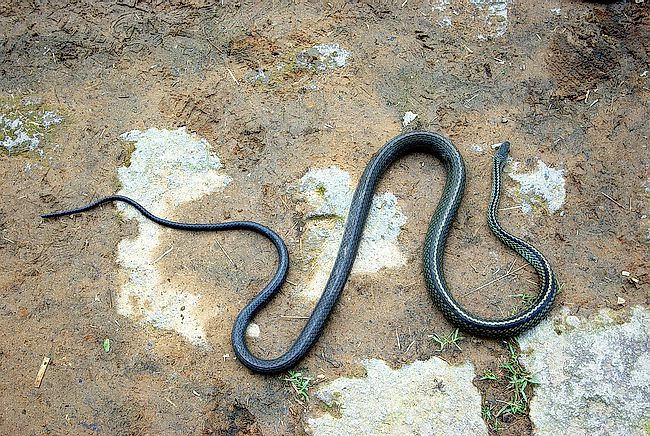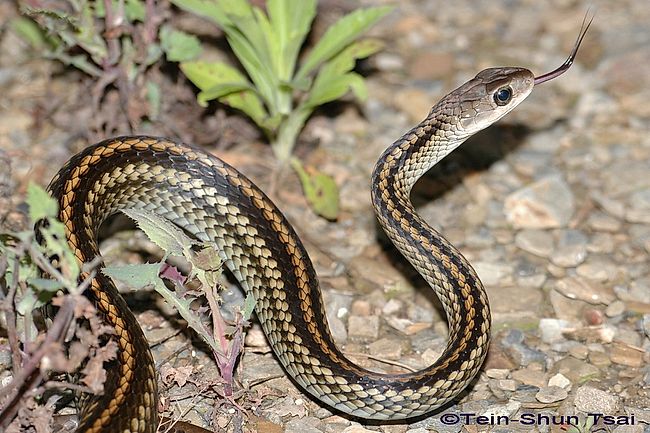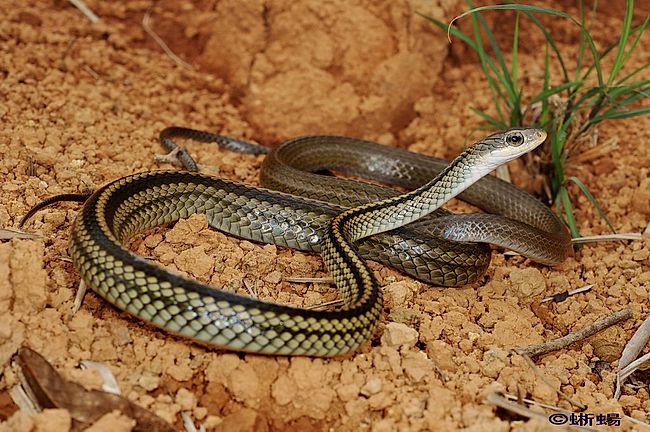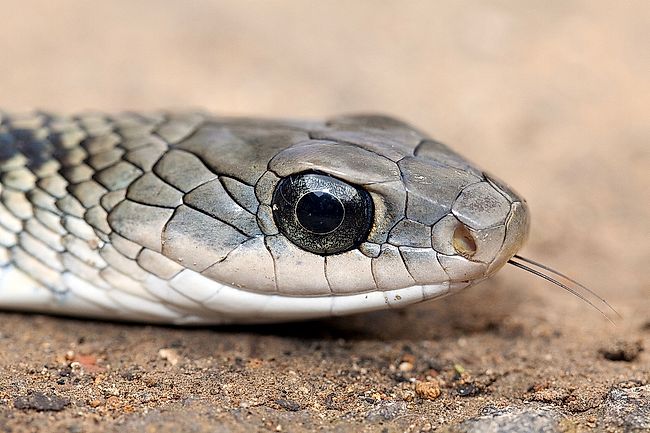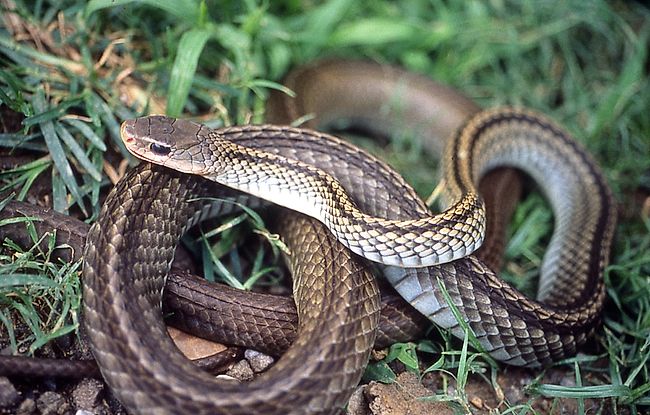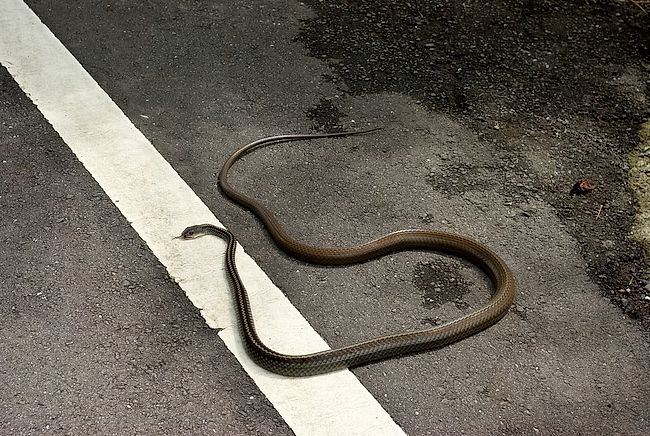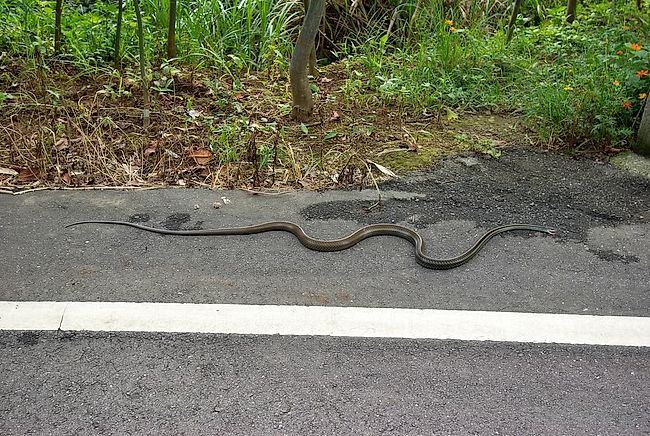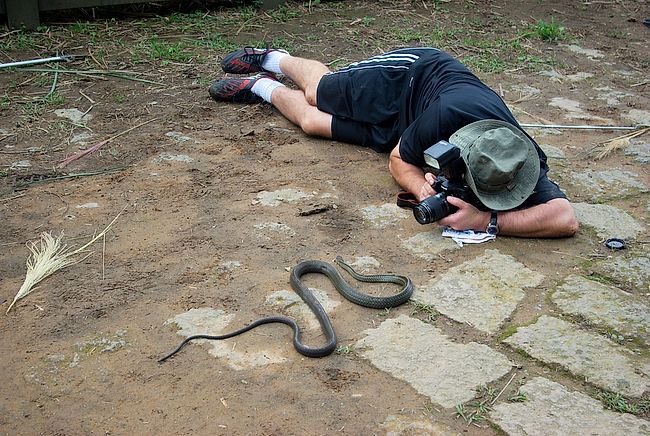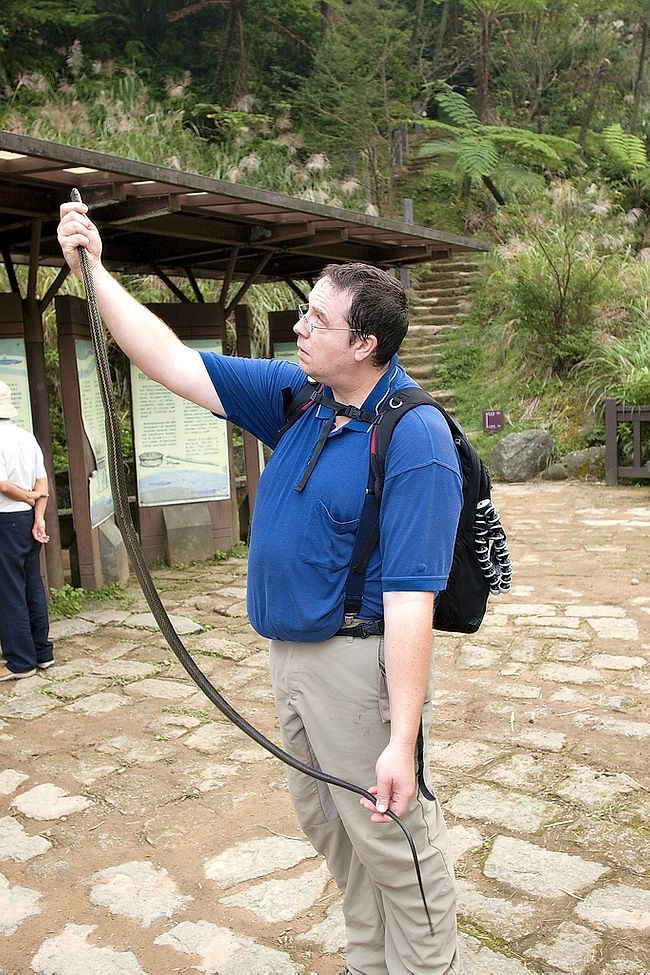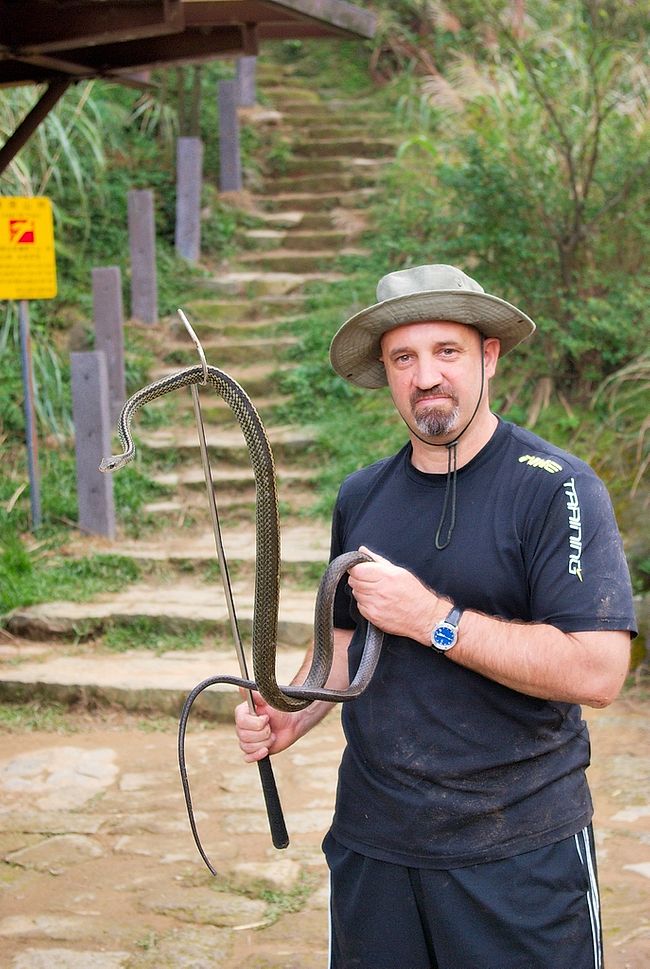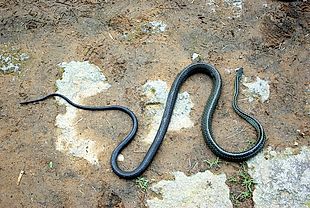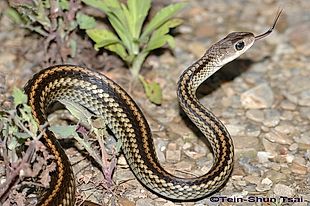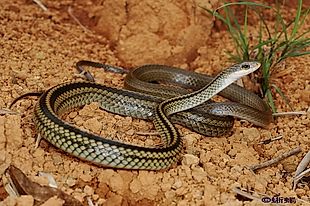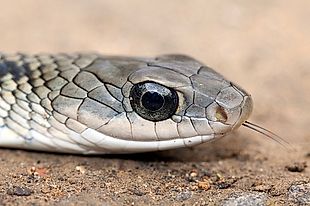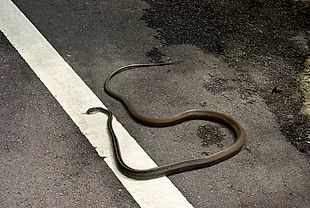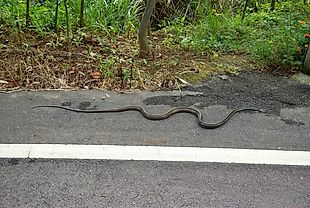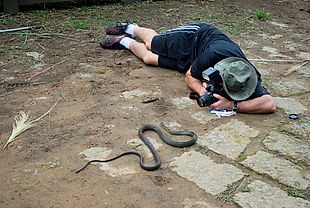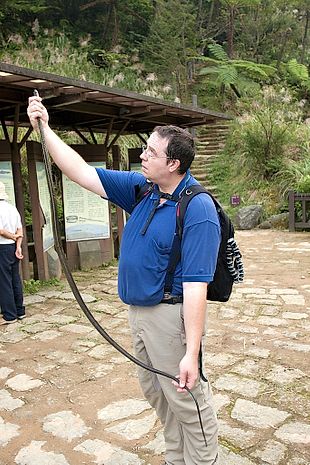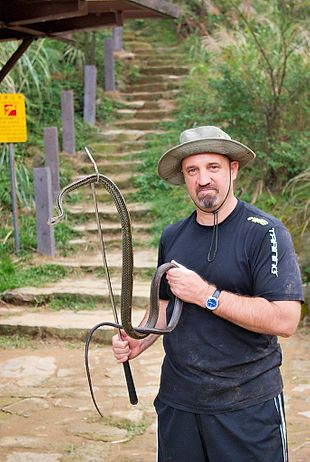Ptyas dhumnades
Big-eyed Ratsnake
過 山刀 (guo4shan1dao1)
Status: Not Protected
Non-venomous
Family
Colubridae, subfamily Colubrinae
Max. length
220 cm
Occurrence in Taiwan
Throughout Taiwan, but more widespread in the North; up to 1800m.
Global Distribution
Central/South China (Guangdong, Guangxi, Hebei, Henan, Hubei, Hunan, Jiangxi, Jiangsu, Shanxi, Shaanxi, Sichuan, Fujian, Yunnan, Guizhou, Gansu), Taiwan.
Description
Large snake; total length up to 220 cm. There are 11-16 (16 at mid-body) rows of scales, which are keeled around the vertebral line. Head is oval to slightly triangular, and moderately separated from neck; body is slender and tail is long. Eye is very large; iris is dark gray to black dappled dirty yellow to tan and pupil is round, black, surrounded by ring of dirty yellow. There is a well-developed supraocular and a ridge from eye to nostril. Tongue is large, gray against dark red, and fork tips are darker gray or even black. Upper head is usually olive gray to dark gray with narrow margins of black on scutes; the sides are lighter in color. There is a yellow to yellow gray stripe, involving two scale rows on the vertebral line, and from neck to a point beyond mid-body. The vertebral line is bordered by prominent black longitudinal lines, which also fade near mid-body; the lines followed ventrally by second less distinct longitudinal yellow gray line, then a narrower line of black, and finally a yellow gray line just above latero-ventral junction. Upper body is striped from neck to tail in the young. Ventral head and neck are white to gray. Ventral body is light anteriorly, progressively darker gray or blue gray posterioly, and tinged with dirty yelow. Anal scale is divided and subcaudals are paired and distinct due to dark borders.
Biology & Ecology
This diurnal and terrestrial snake inhabits grasslands, woodlands and farmland. It feeds extensively on fish, frogs, lizards, snakes, birds, and mice. Females produce 6-17 eggs of 3.6-4.5 x 2-3 cm per clutch in late spring and summer. It is a highly nervous and very agile snake, prone to quick erratic movements when cornered (but does not necessarily attempt to bite). It has been reported to sleep in trees at night.
This is the fastest snake in Asia, and due to its large eyes probably among the ones with the best reaction - a combination that makes it hard to observe and even harder to catch.
The snake's meat finds use in Chinese medicine, where it is prescribed as a treatment for leprosy as well as for a host of more general ailments.
Etymology
Ptyas is an Ancient Greek for a kind of serpent said to spit venom into the eyes of men.
dhumnades: "STEJNEGER (1907) speculates that CANTOR might have meant to indicate a snake that
is like his Coluber dhumna (= Coluber mucosus), the name of which in Hindu is said to be 'dhamin' ".
The Chinese name 過山刀 (guo4shan1dao1) literally means "the knife that crosses the mountain"; the knife most probably referring to the triangular cross-section of the snake's body, and the mountain-crossing to its agility and speed.
Further Info










